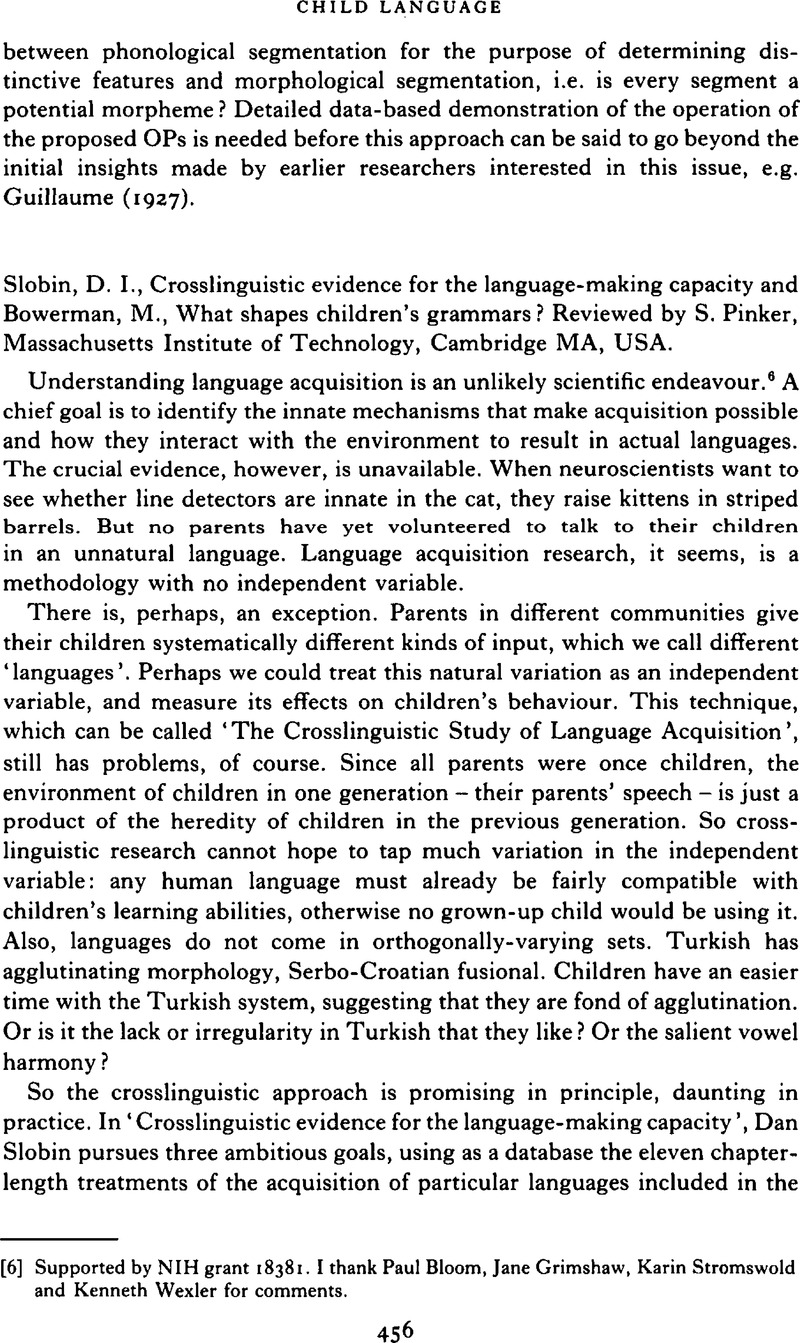Crossref Citations
This article has been cited by the following publications. This list is generated based on data provided by Crossref.
Wexler, Kenneth
1990.
Innateness and maturation in linguistic development.
Developmental Psychobiology,
Vol. 23,
Issue. 7,
p.
645.
Van Valin, Robertd
1991.
Functionalist linguistic theory and language acquisition.
First Language,
Vol. 11,
Issue. 31,
p.
7.
Kail, Michèle
and
Bassano, Dominique
2000.
L'acquisition du langage. Volume I.
p.
29.
Ramscar, Michael
and
Dye, Melody
2011.
Learning language from the input: Why innate constraints can’t explain noun compounding.
Cognitive Psychology,
Vol. 62,
Issue. 1,
p.
1.
Weist, Richard M.
2023.
Semantic Theory versus Semantic “Lumping”: Reply to Bertinetto et al. (2015) The acquisition of tense and aspect in a morphology-sensitive framework: data from Italian and Austrian-German children.
Linguistics,
Vol. 61,
Issue. 1,
p.
265.



